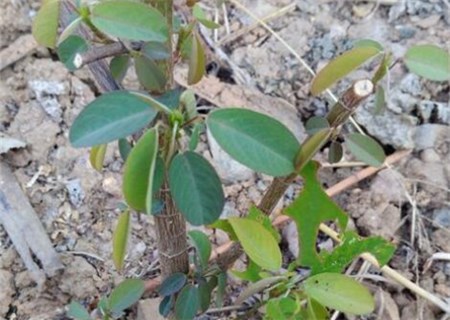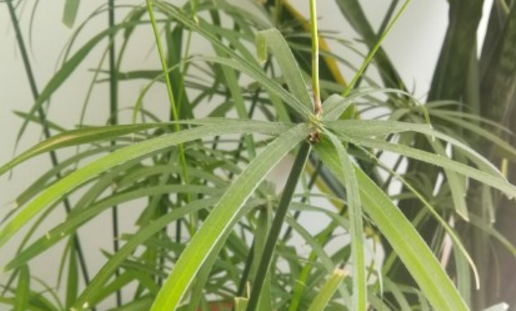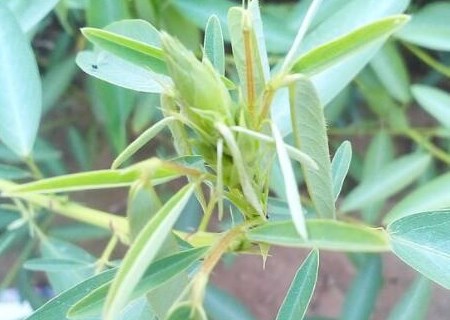Why does dancing grass (also known as lover grass) move? How to maintain it? What's the use?
Dance grass, very sensitive to sound waves, will continuously swing up and down when stimulated by sound waves, like a butterfly dancing its wings in flight, or a girl with relaxed arms on the stage, hence its name. So do you know why the dancing grass moves? How to maintain it? What's the use?

First, why the dancing grass moves
Dancing grass can dance with temperature, sunshine and sound waves.
The leaflets on both sides of the dance grass dance because the cavernous tissue at the base of the petiolule is sensitive to light. In the environment of strong light at room temperature and no wind and rain, the linear leaflets on both sides of the dancing grass leaves will keep swinging, and each leaflet can complete an oval movement in half a minute, return to its original position after 180 degrees, and continue to rotate.
When the sun shines, the temperature begins to rise, the water in the plant evaporates quickly, the sponge expands, and the leaflet swings from side to side. The stronger the light, the faster the movement until all the leaves droop and close to sleep at night. When the sun goes down and the light darkens, the leaves droop, close and stick to the branches.
When it is oscillated by a song of 35-40 decibels, the sponge also shrinks, causing the leaves to wobble.
Second, how to maintain the dancing grass
1. Lighting
Dancing grass likes light, and if there is no light, the plant is easy to grow, become slender, thin and easy to lodge. Pay attention to increase the light. If the weather is not good, you can often turn the flowerpot to let the branches and leaves of the plant receive sunlight at all angles. Let the dancing grass grow fully.
2. Temperature
The plant of Rabdosia mandshurica has strong cold resistance. under the natural temperature in Kunming winter, some varieties can survive the winter in the open field, as long as the roots of most varieties have fully grown before the beginning of winter, even if all the aboveground leaves die, its persistent roots will sprout and blossom in the coming spring.
However, the flowering of lovegrass is very sensitive to low temperature. The flower branches can grow and blossom only when the daytime temperature is above 20 ℃ and the night temperature is not lower than 10 ℃. Otherwise, even the flower branches that have been extracted cannot blossom or blossom unsatisfactorily at low temperature, or even turn yellow and die. Special heat preservation should be done in autumn and winter.
3. Watering
In the budding period of dancing grass, it is necessary to keep the basin soil moist. After budding, the basin soil should be dry outside and wet inside. Drier, the watering time is usually in the morning, if tap water is used to avoid the sun, the water had better be placed for 6 minutes to disperse the chlorine in the tap water, and it is best to use a thin-eye pot when watering, from away from the plant, gradually close to the plant, watering around more.
4. Fertilization
Dance grass has less demand for fertilizer, and the frequency of fertilization is not much. When the plant grows to more than a month, the first fertilization should be carried out. The second fertilization was carried out at the flowering stage of the plant, that is, when the plant grew to 2-3 months.
What is the function of dancing grass
1. The ornamental value of dancing grass
There are many linear lobules on both sides of the leaves of dancing grass, so they are very sensitive to sound waves, and it is easy to continuously swing branches and leaves up and down under the stimulation of sound waves, just like a graceful girl dancing, hence the name, which has a high ornamental value. Far from the general ornamental plants, we can enjoy the beautiful form of dancing freely with the change of the environment, which has a unique interest. It has been widely used in horticultural design, and it is also an excellent choice for bonsai production.
2. The medicinal effect of dancing grass.
Dance grass not only has a high ornamental value, but also has the value of medicinal health care, the whole plant can be used as medicine, it can be said that the whole body is a treasure. The Compendium of Materia Medica has a clear record of this. The book mentions the wide range of functions and uses of dance grass, which can remove blood stasis, relax muscles and activate collaterals, treat fractures, or soak in alcohol clothing, strengthen muscles and bones, and treat rheumatic pain. In addition, wash your face after soaking in fresh leaves, which can make the skin whitening and delicate and have a cosmetic effect.
3. The scientific research value of dancing grass.
Dance grass is the only plant in nature that responds to sound. Of course, this rare feature has attracted wide attention from scientists. According to scientific research, dancing grass dancing is affected by temperature, sunlight and sound induction under certain rhythm, rhythm and intensity. However, the specific situation of why the dancing grass dances is still an unsolved mystery, which needs to be further studied and explored.
Time: 2019-03-16 Click:
- Prev

What is the hydroponic culture method of Cyperaceae? Can I bask in the sun? What about the rotten roots?
Parasol grass is also known as umbrella grass, water bamboo, water palm bamboo, windmill grass, so what is the hydroponic method of parasol grass? Can I bask in the sun? What about the rotten roots? According to the data, the parasol grass likes a warm and humid environment, it should be ventilated and exposed to the sun, and a cool environment is the best. Just don't expose yourself to the sun.
- Next

Butterfly flower subfamily dance grass bonsai how to raise? What are the common diseases and insect pests and their control methods? How much is it per pot?
Dancing grass, a kind of dancing grass, dances like a butterfly fluttering its wings in the air, or a dancer with relaxed arms on the stage. So do you know how to raise dancing grass bonsai that can dance? What are the common diseases and insect pests and their control methods? How much is it per pot? In Yunnan flower market, we learned that
Related
- Fuxing push coffee new agricultural production and marketing class: lack of small-scale processing plants
- Jujube rice field leisure farm deep ploughing Yilan for five years to create a space for organic food and play
- Nongyu Farm-A trial of organic papaya for brave women with advanced technology
- Four points for attention in the prevention and control of diseases and insect pests of edible fungi
- How to add nutrient solution to Edible Fungi
- Is there any good way to control edible fungus mites?
- Open Inoculation Technology of Edible Fungi
- Is there any clever way to use fertilizer for edible fungus in winter?
- What agents are used to kill the pathogens of edible fungi in the mushroom shed?
- Rapid drying of Edible Fungi

